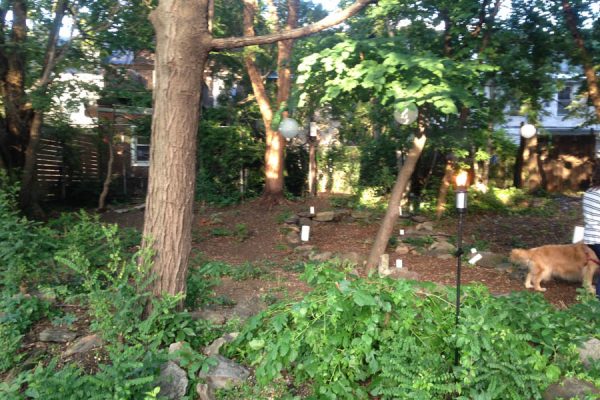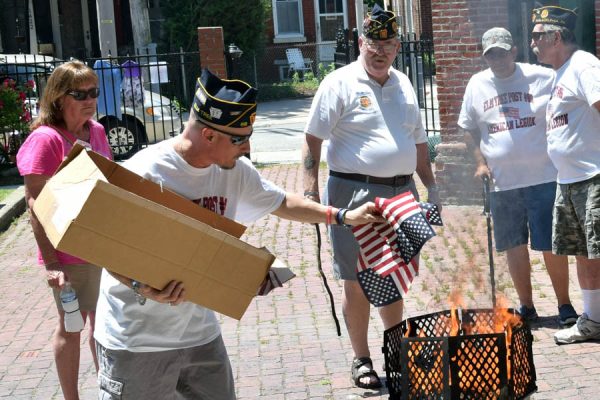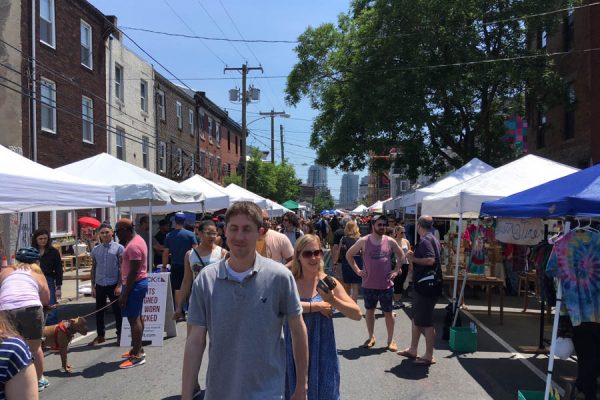OPINION: We ALL Lose if St. Laurentius Goes
How can something so incredibly beautiful, so replete with history, something that housed the joys, pains, sorrows, hopes, beliefs and fellowship of so many Fishtown Catholics for OVER 100 years be cast aside so recklessly with such disdain and apparent aggression? A few MINOR fixable flaws, it seems, are reason enough to reduce one of the most magnificent structures that has or ever will stand in Fishtown to a pile of dust and memories.
The Archdiocese announced that they will proceed with securing bids for the demolition of St. Laurentius Church, that breathtaking glorious structure that has stood sentinel over the corner of Berks and Memphis since the early 1800s. This announcement has opened a long-festering wound—bringing a fresh wave of outrage, heartbreak, and disgust—emotions that should not be shouldered by the parishioners of St. Laurentius alone.
This building is a treasure that belongs to all of us who value history, beauty, the dedication and sacrifice of our immigrant forebearers, for those who value the redemption and potentially vibrant second act of this architectural paragon. Make no mistake, we are all being robbed.
We should be lighting our torches and taking to the streets but instead we whisper—”oh, that’s so sad” or “too bad about that pretty church, but what can you do?” Where is the collective outrage? Why do most of us think that if only someone rich could swoop in and save the day…Fishtown, this is our David and Goliath moment – WE need to take ownership of this gem, we need to demonstrate to the Archdiocese that what they are doing is:
· Disgusting
· Immoral
· Unconscionable
· Illegal (for more about that visit www.savestlaurentius.org)
Some will argue that it is too expensive to ‘fix’ the church—bullshit! This is not about a lack of funds it is about a lack of fortitude—a deficit only of values and priorities.
Setting the religious significance of the church (which is considerable) aside, let’s look objectively at the building itself. Philadelphia’s built environment (and its network of neighborhoods) was, like most cities, the product of cause-and-effect. First, the “workshop of the world’s factories” were built, then the little row houses sprouted up all around them housing folks to work in the factories. Once the little houses were settled, the churches and schools’ came next to educate and minister to the immigrant population’s spiritual needs. These factory and church structures, aside from being the financial and spiritual livelihood of the neighborhood also provided an architectural respite from the monotony of the repetitive low-slung row-house. Indeed, they MADE the neighborhood.
Spatially and architecturally, these buildings provide a moment of pause, they hold the corner strongly, providing a necessary change in scale, material, and function without which a city becomes a corn-maze of frustrating, meaningless same-ness. Without these punctuation marks, Philly will slump into an incredibly boring, repetitive, same-scaled, car-centric, indistinguishable slurry of housing homogeny.
Imagine Philadelphia without its four-parks squared around City Hall, and the thrust of the Parkway and its axial resolution in the majestic Art Museum. The urban environment and the experience of its inhabitants is enriched by the variety of its built environment.
The character of Fishtown would suffer irreparably at the loss of these larger-scaled, monumental buildings. Stand at the corner of Belgrade and Marlborough to see what I mean—I am haunted by the ghost of the recently destroyed old Pilgrim Church. That church should not have been razed—it should have been re-born.
Fortunately, some local visionary independent business owners see the value in these old buildings and are re-purposing them to house new life. There are some amazing spaces in Fishtown that wouldn’t have one tenth the character they do were they not housed in existing, re-purposed structures: La Columbe, Frankford Hall, Kensington Quarters, Coral Street Arts House, Memphis Flats, Oxford Mills, Philadelphia Brewing Company – why do we love these renovated spaces so much? Why have they become so central to the identity and vibe of our neighborhood? Their sense of time and place anchors us in the world. Their material richness and heft are things we can no longer produce. They connect us to a past that moves within us. You can never build new that sense of permanence and presence that is integral to these old structures. We, as a society will never again erect buildings of this magnificence, we seem only to be able to extrude cheaply-made clusters of too-skinny, imitation row-houses.
A neighborhood is not just a collection of houses—it needs those opens spaces (which too are rapidly vanishing in Fishtown), those larger places where we can bump into each other and pause and connect. These monumental spaces and structures afford an interaction not possible where only houses exist. They give the urban dweller necessary breathing room.
Bringing religion back into it, St. Laurentius was a place where we married each other, buried each other, were baptized and believed. A place where the St. Laurentius school children went to weekly mass, where they staged an incredibly reverent and beautiful annual Christmas pageant—without which, for me the Christmas season never really gets off the ground. The church is God’s people assembled—wherever that might be—but some of that holiness seeped into the bones of St. Laurentius, it became sacred. To this day still it yearns to percolate its sacredness back into us, if only we could get inside.
Empty buildings languish. They need us every bit as much as we need them. We are the music and life that enlivens them. St. Laurentius sits like an unused piano. Where can we play our music? Buildings that used to house so much primal human emotion—as church buildings have – seem to fare worse than others. Without its purpose, its congregants singing breathe into its interior, St. Laurentius stoops. Left on the cross to die, I imagine her asking—”My neighbors, my neighbors, why have you forsaken me?“
I know that with the Archdiocese’s shortage of priests, it is no longer possible to ‘man’ this church and keep it as a worship site. But that is NOT a reason to tear this beautiful structure down. While I am Catholic and would love to see it retain its religious core, I care more that the building remain.
Couldn’t you imagine the space as a performance venue, a place of non-denominational worship and gathering? A shared work hub for local non-profits? A conflict resolution center? A retreat for the healing of racial tensions? There are so many possibilities. Have you been to the basement? That space alone could serve the youth of this neighborhood in countless ways—a dance hall? A roller-skating rink? A movie theater?
Perhaps some Catholics more reverent than myself would not be on board with such secular uses of the building—but she still has magic to render—as a vessel of fellowship, community, celebration and gathering—she has much to offer in the way of a sense of peace, opportunities for repose, reflection, introspection, beauty, and countless other important, vital human experiences.
As a pile of rubble, or a parking lot, or the site of yet more condos – those vital human experiences will never happen.
We are all being robbed.
Do you think the folks around Rittenhouse Square would stand by if the city decreed that it could no longer maintain Rittenhouse Square and proposed a useful parking lot in its stead? Or some new condos? We would all be outraged.
Shame on anyone who ‘voted’ that demolition was the best recourse for this incredible building. Its blood is on your hands.
Fishtown, where has your fight gone?
PS: By the way, Vatican, there is a very simple solution to your priest shortage: ordained women. I doubt a women Archbishop would have initiated the destruction of something so beautiful, so meaningful, and still so useful. Indeed, where would Jesus, and the church, be without Mary, Martha, Mary Magdelene and Prisca?







